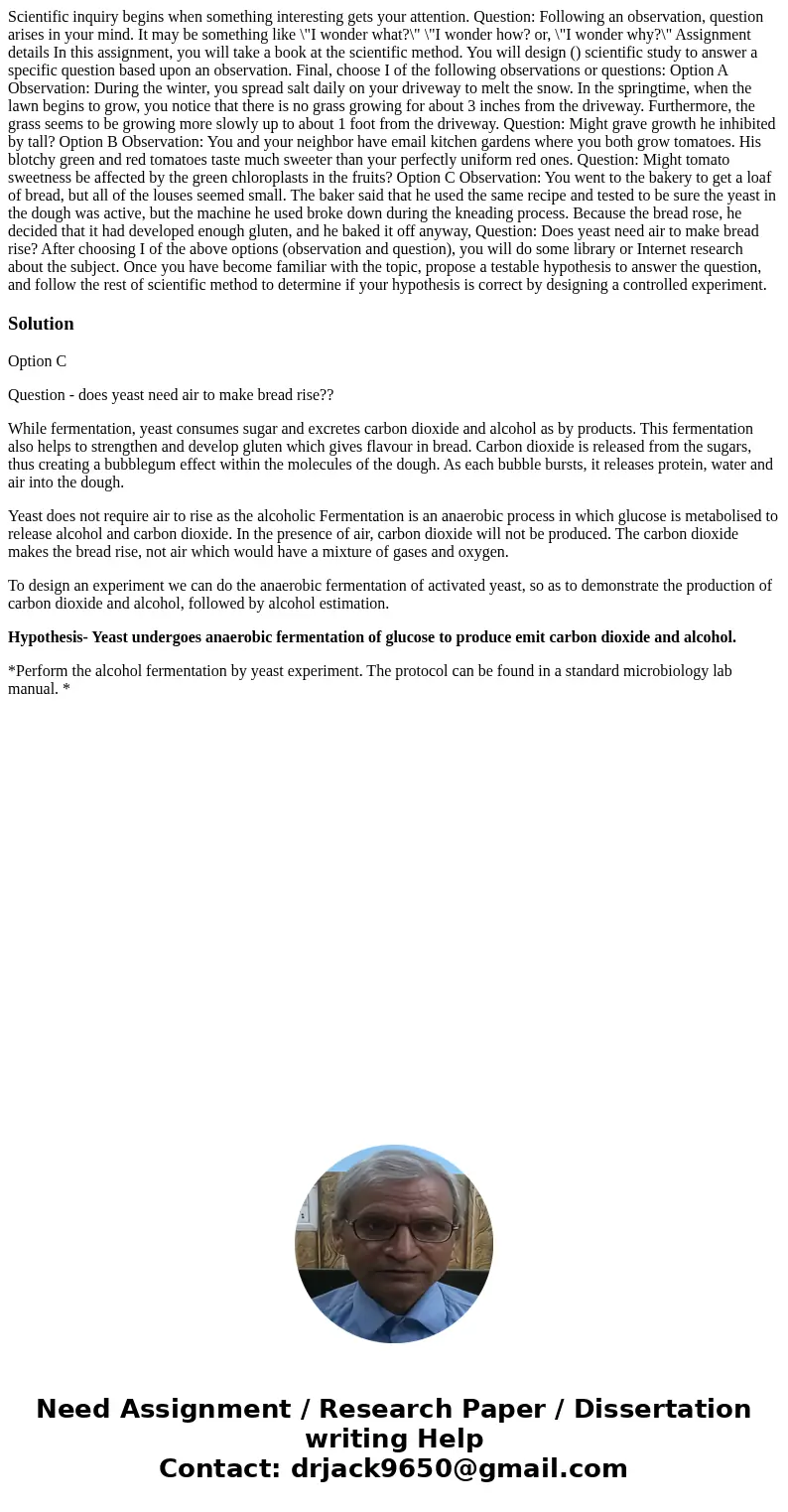Scientific inquiry begins when something interesting gets your attention. Question: Following an observation, question arises in your mind. It may be something like \"I wonder what?\" \"I wonder how? or, \"I wonder why?\" Assignment details In this assignment, you will take a book at the scientific method. You will design () scientific study to answer a specific question based upon an observation. Final, choose I of the following observations or questions: Option A Observation: During the winter, you spread salt daily on your driveway to melt the snow. In the springtime, when the lawn begins to grow, you notice that there is no grass growing for about 3 inches from the driveway. Furthermore, the grass seems to be growing more slowly up to about 1 foot from the driveway. Question: Might grave growth he inhibited by tall? Option B Observation: You and your neighbor have email kitchen gardens where you both grow tomatoes. His blotchy green and red tomatoes taste much sweeter than your perfectly uniform red ones. Question: Might tomato sweetness be affected by the green chloroplasts in the fruits? Option C Observation: You went to the bakery to get a loaf of bread, but all of the louses seemed small. The baker said that he used the same recipe and tested to be sure the yeast in the dough was active, but the machine he used broke down during the kneading process. Because the bread rose, he decided that it had developed enough gluten, and he baked it off anyway, Question: Does yeast need air to make bread rise? After choosing I of the above options (observation and question), you will do some library or Internet research about the subject. Once you have become familiar with the topic, propose a testable hypothesis to answer the question, and follow the rest of scientific method to determine if your hypothesis is correct by designing a controlled experiment.
Option C
Question - does yeast need air to make bread rise??
While fermentation, yeast consumes sugar and excretes carbon dioxide and alcohol as by products. This fermentation also helps to strengthen and develop gluten which gives flavour in bread. Carbon dioxide is released from the sugars, thus creating a bubblegum effect within the molecules of the dough. As each bubble bursts, it releases protein, water and air into the dough.
Yeast does not require air to rise as the alcoholic Fermentation is an anaerobic process in which glucose is metabolised to release alcohol and carbon dioxide. In the presence of air, carbon dioxide will not be produced. The carbon dioxide makes the bread rise, not air which would have a mixture of gases and oxygen.
To design an experiment we can do the anaerobic fermentation of activated yeast, so as to demonstrate the production of carbon dioxide and alcohol, followed by alcohol estimation.
Hypothesis- Yeast undergoes anaerobic fermentation of glucose to produce emit carbon dioxide and alcohol.
*Perform the alcohol fermentation by yeast experiment. The protocol can be found in a standard microbiology lab manual. *

 Homework Sourse
Homework Sourse